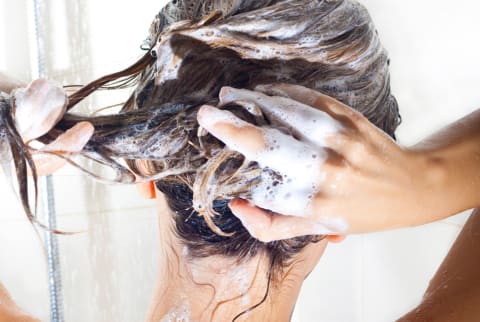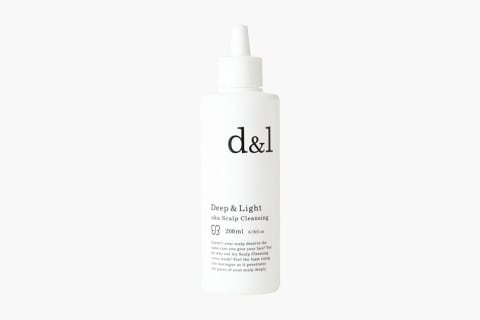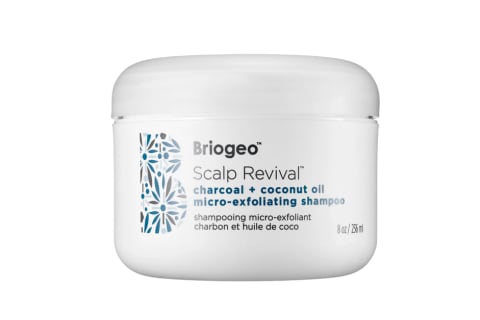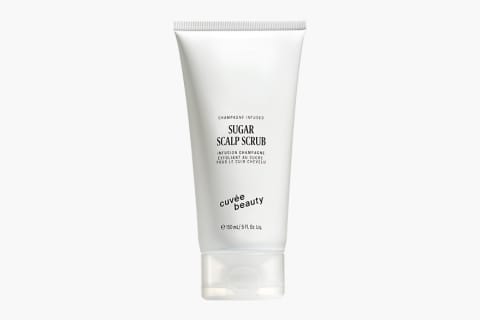Advertisement
A Complete Guide On How To Exfoliate The Scalp: Tips, Products & More


Scalp care has rightfully taken up more space in our beauty consciousness. Hairstyling and care have typically taken up the lion's share of the conversation and market, while scalp care was treated like an afterthought—something to pay attention to if you had a problem.
But in recent years, more of us are starting to smarten up about the scalp. One such way? Exfoliation. Once a term reserved for the face and body, exfoliation is now certainly in the lexicon of hair and scalp care. In case you're curious, there are several ways to do it, depending on your needs, scalp type, and hair type—and much like you should be cautious with being overly aggressive, you should be mindful of that here, too.
Here, just about everything you need to know about scalp exfoliation.
Why you should exfoliate your scalp
The short answer is that you should exfoliate your scalp because your scalp is skin, and regular exfoliation is beneficial for the skin. The long answer is that your scalp collects a variety of debris ranging from natural oils, dirt, particulate matter, dead skin cells, and styling or care products. And because most of us also have hair on our heads, all that stuff gets trapped easier, as it's wedged between strands and not as able to slough off on its own. This all leads to buildup.
Too much of it can lead to scalp inflammation, resulting in flakes, itching, sometimes even tenderness or pain. "When you have product, dirt, and oil building up around your follicle opening—which is where your hair grows out of—buildup around that starts to slowly suffocate your hair root, and it causes inflammation," trained trichologist and hairstylist Shab Reslan once told us about the condition.
Even worse, this can lead to hair loss over time. Take it from Adarsh Vijay Mudgil, M.D., board-certified dermatologist and founder of Mudgil Dermatology: "If buildup is really extreme, it can even pull the hair down because there's so much inflammation around the hair follicle," he previously told us. That's why many experts tout scalp-stimulating treatments for speedier hair growth—a clean, happy scalp leads to full, lush strands:
Salicylic acid and tea tree oil shampoos
Throughout this story, you'll likely notice us making several comparisons to proper skin care. (We've already made a few.) This is because there are many parallels to think about. Here, let's make a parallel between face wash and shampoo. When we talk about facial exfoliation, people's heads tend to go to treatments, forgetting that certain types of face washes also act as an exfoliator. Namely, face washes made with chemical exfoliating ingredients, like AHAs or BHAs.
Well, the same goes for shampoo. When you think of scalp exfoliators, you may initially think of tubs of salt-or-sugar scrubs, but you should also consider certain shampoos exfoliators. Namely, tea tree and salicylic acid shampoos. Tea tree oil is an astringent and is incredibly effective at removing oil and debris. Plus, due to the EO's anti-inflammatory properties, it can help lessen any irritation caused by said buildup. Salicylic acid shampoos use the oil-dissolving power of the BHA to slough off gunk and dead skin cells.
Clarifying shampoos
Clarifying shampoos are simply a subcategory of rinse that specializes in deep cleaning the hair and strand. The formulas open up the pore and strand's cuticle (through various ingredients, like charcoal, apple cider vinegar, or rosemary), pulling out dirt and grime. Not only can these shampoos help clarify the scalp, but they can remove any film or coating left on the hair from past styling products (this is a particular concern for those using products with silicones, as they tend not to rinse off with just water). Here, check out our favorites or this handy DIY version.
Physical scrubs
A physical scrub is likely the item you think of when discussing this topic. Well, for good reason: Scalp scrubs are incredibly effective at getting rid of a plethora of scalp-clogging woes, without being too abrasive. Granular exfoliants use small particles—in the natural world, things like sea salt or sugar—blended with oils—think, coconut or jojoba—to manually lift off the debris on the scalp. What's nice about physical scrubs is you can control the pressure of the application: If you need a bit more work on the scalp, simply press down harder with your finger pads. Too rough? Lighten up. Simple as that. Check some of our go-to scrubs.
Chemical exfoliating serums or treatments
Let's go back to our skin care parallel: Just as you can do face scrubs to exfoliate, you can also use skin-cell-sloughing serums and treatments. These are liquid-based and clean your hair through astringent or exfoliating actives, that may range from acids and enzymes to even certain essential oils, like this DIY blend. People enjoy these, as they tend to be more cosmetically appealing and don't take as much elbow grease (by which we mean, you're not doing any of the scrubbing yourself; simply apply the product, and it will start working on the skin.) However, there also tends to be less control over how potent these are, so a general rule of advice is to start slow and low, building until you find your sweet spot.
Scalp tools and buffers
When you hear the term "scalp massagers," you may write off the tool as a needless indulgence. Well, we're here to tell you they come with a laundry list of benefits: It's not just about the feel-good sensation. These brushes can also help loosen scalp buildup, which makes it easier to rinse out all the gunk—just take a moment to massage your dry hair before your rinse. In the shower, it helps deposit your shampoo and work up a lather (we welcome all the help we can get when it comes to shampooing correctly). Not to mention, regular scalp massages have been shown to support circulation and kick-start healthy hair growth. Some even use the tool post-conditioner to detangle their locks—the possibilities are truly endless.
Signs you need to exfoliate
If you're looking for clues that it's time to whip out the scrub or serum of choice, there are telltale indicators you can keep an eye (and feel) out for:
- You can feel the buildup. This may sound quite obvious, but it's worth noting regardless. Sometimes when you've gone long enough without a proper rinse, you can start to feel a waxy, gunky film covering the scalp. Gross, yes, but a totally natural blend of oils and dead skin cells.
- Your hair "hurts." This phenomenon is actually caused by inflammation at the root. "When you have product, dirt, and oil building up around your follicle opening—which is where your hair grows out of—buildup around that starts to slowly suffocate your hair root, and it causes inflammation," says Reslan. "This inflammation will not only affect the quality of your hair growth, but it will physically hurt. So when you're moving your hair around, it's the inflammation that you are feeling."
- You see flakes. Flakes may be caused by dryness, dandruff, or even buildup. You may notice that product buildup is more "sticky" on the hair, whereas dandruff is larger, and dryness is smaller and thinner.
- Your scalp itches. A very common sign of buildup is you have an increased urge to scratch your scalp.
- You have flat hair at the roots. If your hair is looking a little more lifeless at the root or weighed down allover, it may be because the oil and product buildup at the root is pulling your style down.
Tips and cautions
This isn't the first time we've written this, and it won't be the last time: Your scalp is skin just like the rest of your body and should be treated as such. And just like your delicate face or body, it is entirely possible to make mistakes when exfoliating. Here, some advice to make sure you're treating your scalp right:
- Do not over-exfoliate. Only you will know what your ideal exfoliation sweet spot is, but most experts will tell you to stick to it once every other week. ("The most important tip is that 'less is more.' You want to exfoliate just enough to increase cell turnover and reveal fresh new skin," says Ife Rodney, M.D., a board-certified dermatologist and founder of Eternal Dermatology. "But be sure to not scratch or damage your skin by overusing these devices or products.") It also depends on your method: If you are using a tea-tree-oil-infused shampoo, you'll likely use that more than you might a salt-based scrub. But the point here is to err on the side of caution, as over-exfoliation can backfire, disrupting your microbiome and triggering inflammation, too.
- Hydrate the scalp too. You wouldn't do a potent face peel and then not apply a moisturizer after, no? So don't do the same with your scalp. After you exfoliate, you'll want to hydrate, too. This can be done with a conditioner in the shower or post-wash with a scalp oil.
Favorite products
Want quick recommendations on products? Look no further. Here, three easy options that cover the spectrum: a shampoo, scrub, and serum.
The takeaway
We love that people have started paying more attention to the scalp. It's attention that's rightfully deserved. However, you have to know how to exfoliate correctly—just like with the face, exfoliation can go wrong. But as long as you follow these guidelines, you'll be right on track.


